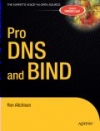
Classless Routing Overview
This is a simplified description of classless routing principles. For more information.
Classless routing, defined in RFC 1817, allows for the routing of non-octet boundary subnets and greatly increases the usage of the existing IPv4 address space. Prior to Classless routing only Class boundary routing was supported e.g.:
CLASS A address e.g. 10.0.0.0 subnet mask 255.0.0.0
CLASS B address e.g. 172.16.0.0 subnet mask 255.255.0.0
CLASS C address e.g. 192.168.0.0 subnet mask 255.255.255.0
Class C address ranges are used for the following examples but the principles apply to all address ranges.
Classless routing, in this context, describes the process of splitting and routing the Class C space into multiple subnets. Assume we want to allocate and route a 32 address subnet, starting at address 64, in the Class C address 192.168.23.0. This could be written as:
192.168.23.64 netmask 255.255.255.224
To simplify the process of writing this, a short-form (sometimes called the 'slash' form, officially an IP Prefix) '/x' is used, where x defines the number of contiguous bits in the subnet mask. So the above could be written as:
192.168.23.64/27 (27 is the number of contiguous bits in the subnet mask 255.255.255.224)
Remember that the first address in the subnet is reserved as the network address and the last for broadcasting - you always lose two addresses in any subnet.
The following table shows the relationship between the 'slash' form and the subnet mask - starting with a base address of 0:
192.168.23.0/24 (subnet mask 255.255.255.0)
192.168.23.0/24 (256 IPs - subnet mask 255.255.255.0)
192.168.23.0/25 (128 IPs - subnet mask 255.255.255.128)
192.168.23.128/26 (64 IPs - subnet mask 255.255.255.192)
192.168.23.192/27 (32 IPs - subnet mask 255.255.255.224)
192.168.23.224/28 (16 IPs - subnet mask 255.255.255.240)
192.168.23.240/29 (8 IPs - subnet mask 255.255.255.248)
192.168.23.248/30 (4 IPs - subnet mask 255.255.255.252)
Problems, comments, suggestions, corrections (including broken links) or something to add? Please take the time from a busy life to 'mail us' (at top of screen), the webmaster (below) or info-support at zytrax. You will have a warm inner glow for the rest of the day.













